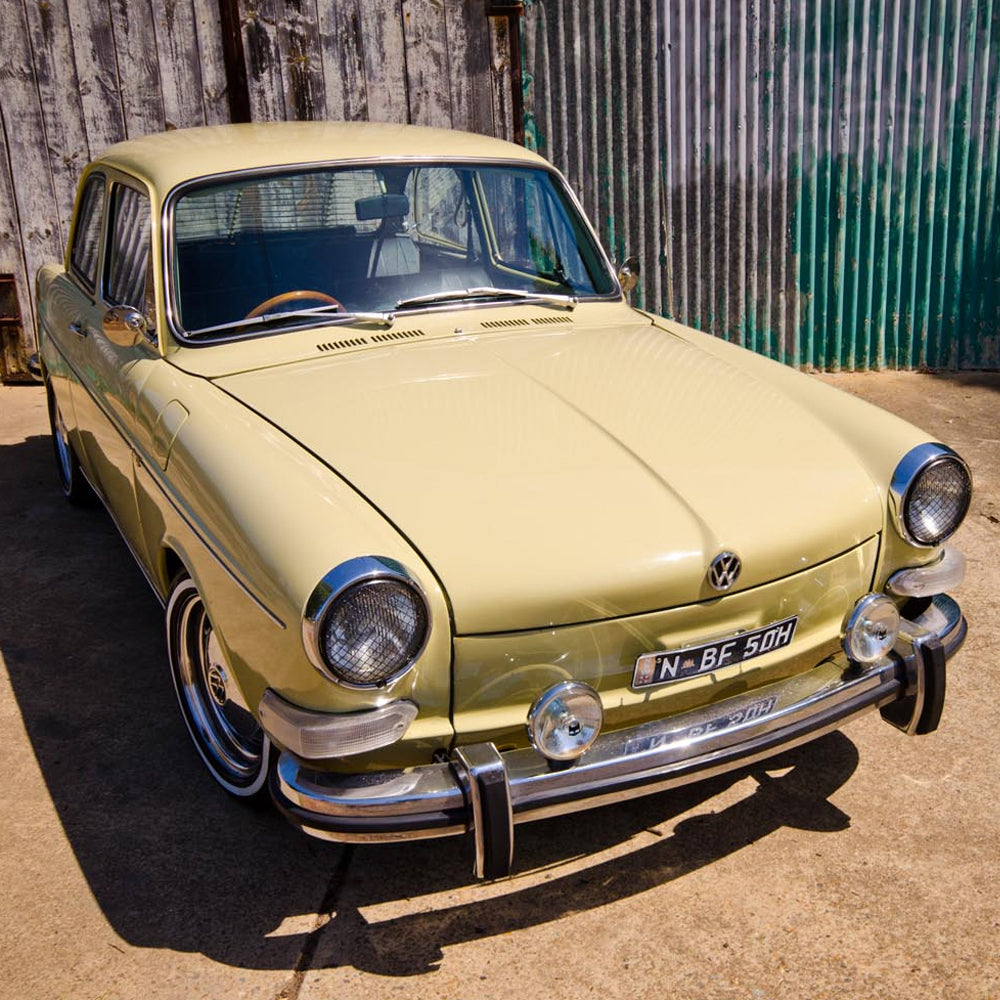Year, Make, and Model: 1971 VW Type 3
Location: Sydney, New South Wales, Australia
Photographer: Gerard “Mikee” Laugesen
I learned to drive on my dad’s VW Superbug which we still have, but I was never that interested in aircooled Volkswagens. Beetles weren’t the type of car a seventeen year old wanted to be seen in, around my area. My first car was a VW Golf GTi Mk2 that I still regret selling. It was fast and fun, but had a litany of electrical glitches and I sold it in favor of buying a bigger car to suit my six-foot-seven-inch (about two meter) frame, a Holden VL Commodore (a rare 5speed manual with a Nissan 3L 6 cylinder) but that wasn’t my scene.
The bug really bit when I saw my first VW Type 3. I didn’t even know they existed; I had to ask my dad what it was. From that moment I had to have one. When I saw this one for sale I hadn’t even looked at any other cars, I just took a deep breath and dove in.

I have had this Type 3 for six years since I bid and won it, sight unseen, on eBay for the very reasonable sum of $1300. It was in fairly original condition at the time with next to no rust. The price was practically theft and I think the seller resented the sale a bit. It included receipts dating back to the early ‘80s. It was running, registered in Victoria, and we drove the car 1000km (~600mi) back to Sydney the day I bought it.
The car is painted the original Shantung Yellow, which is a single-year only color for VW. Notchbacks are relatively rare amongst Type 3’s with many Australian notchbacks ending up in the US where they were never offered for sale.
After bringing the car back to Sydney I immediately set about getting some port-a-wall inserts fitted and lowering the car a few inches all round. Aside from polishing and cleaning it up, I did basically nothing to it for 2 years other than drive it every day. It’s been a genuine daily driver its entire life. There were a few small areas of rust showing when I bought the car that worsened during my ownership so I decided to show some respect to the car by dealing with the rust.
With my local mechanic’s help, we cut out the rot around the tops of the fenders and near the rear window. Once the windows were out, one thing led to another and we ended up replacing every rubber and chrome window strip, installing new headlining and a new TMI interior. I had planned on just painting the areas that were repaired, but instead we went for a full respray. After painting the car I babied it around a bit, trying not to leave it out in the rain or take it to shopping centers where it might get scratched but it only took a few months to get over this phase and the car went back to daily driver status. The car is not a show car and the paint is showing signs of wear, but I like it that way; every stone chip and minor scratch is kind of a badge of honor.
Driving it every day meant that the engine would inevitably require an overhaul. I knew that eventually the piston rings would go and I would have to spend a few dollars so I bought a set of 40mm Weber carburetors (again on eBay) and fitted them to the original 1600 motor. The carbs were just too big but I didn’t care, the sound was addictive. I knew that the way I drove the car with those Webers meant that the engine overhaul would need to come sooner rather than later.



After a particularly spirited drive through Kangaroo Valley just south of Sydney, it became evident that it was time for a rebuild. I stripped the engine and sent the case away to be acid dipped, crack tested, tunnel bored, and enlarged out to accept larger 1776cc pistons and barrels (I needed more CC’s under those carbs).
The stock crank was tested and we found that it had so little wear that it was still within factory tolerances (Type 3 engines are notoriously long-lived) so the stock crank was retained. The stock con-rods were only very slightly worn so they were bored and straightened, ready for service again. We re-assembled the bottom end with an Engle 110 cam, new bearings, cam followers, hi performance oil pump, etc. The top end consists of Bugpack StreetPro heads with larger ports, valves etc. The idea was to build a reliable daily driver engine with a focus on bottom end torque and drivability. It would have been easy to go wild, but then the drivability would suffer and as we all know, the car becomes a bottomless money-sucking pit. I did a lot of the work myself in my parent’s garage. The combination of the extractor exhaust and those 40mm Webers needs to be heard, it’s unreal. The Notch sounds even better than it looks.
Old cars need to be driven but somehow people are amazed that I use this car as a day-to-day commuter. I always think, someone used this car everyday in the 70’s and the roads are better now than then, so why can’t I drive it every day? Life is too short to drive boring cars. It’s only uncomfortable when the temperature gets over 35 degrees C and the vinyl seats mean you arrive drenched in sweat, but that is only a few weeks of the year so I can put up with it. The rest of the year the car is comfortable and bulletproof reliable.
There is much more to talk about but I’ll leave it at that for now.
Want to see your vintage car on Petrolicious? Click here for more information.















































































